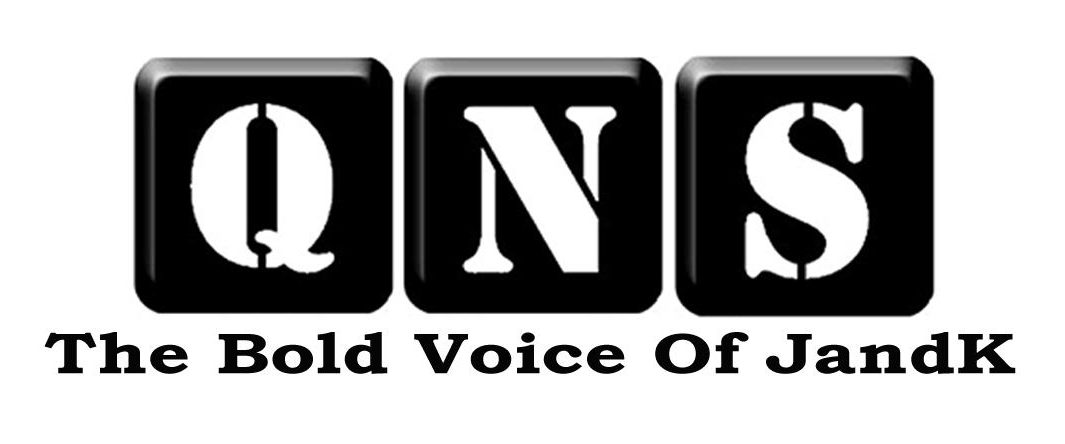To understand the knockout punch delivered by the BJP to the PDP months ago, we must dig deep
Siddiq Wahid
The first business of politicians is to acquire power. Usually their second errand is to build an edifice to retain power. Their third and crucial task, often neglected, is to regulate the use of power to prevent abuse. So, to say that a government collapsed because ‘politicians are interested only in power’, as some analyses have done, is to state the self-evident. And stating the obvious fosters tolerance for the merely acceptable, as opposed to the search for what is right.
Therefore, to understand the knockout punch delivered by the Bharatiya Janata Party (BJP) to the People’s Democratic Party (PDP) a month ago, we must dig deep. The so-called coalition became dysfunctional almost immediate after it was born and turned out to be a treacherous mismatch. Why?
Because on the one hand the BJP is the synthetic outcome of an organizational network that has been cultivated for a century with a clear vision of a territorial, literalist and puritanical Hindu India. The Muslim-majority State of J&K has been a threat to all these claims. The PDP, on the other hand, is an infant political party. Its vision was drafted to nuance divide-and-rule. Its mission was crafted to clip the wings of the National Conference (NC). Its politics is defined by individual guile rather than collective wisdom. It underestimated the BJP’s potency.
In coalescing with the BJP, the late Mufti Mohammed Sayeed’s stated ambition was to “change the politics” of the state. But it was delusional to think that this could succeed in alliance with a party that is diametrically the opposite of the PDP in historical maturity, stated creed and tactical prowess. And, also, a party that the PDP vilified during the 2014 campaign. Consequently, both PDP Chief Ministers were forced to swallow the uncertainty of several ups and downs and the indignity of repeated affronts and insults. In advancing a tactic that was a colossal miscalculation and a cynical gamble, the PDP overestimated its capability.
It is normal to overestimate oneself at times and, at other times, to underestimate others. But to do both at the same time is to fall prey to hubris, false pride.
A predictable fall
The formal collapse of the government was predictable, especially after the death of the architect of the PDP’s strategy and tactics. There has been a lot of finger-pointing between coalition partners, but common sense tells us that both parties are equally to blame.
The BJP’s motives for initiating the final fall are not difficult to discern. It desperately needs to consolidate its strategy for the 2019 general elections. J&K, as a Muslim majority state, has always rankled the BJP-RSS combine. Short of decreeing demographic flooding (as is openly advocated by its more radical family members) the BJP is doing all it can to foment Hindutva-centric politics in Kashmir. The PDP has provided it with a toehold in the state that may become a permanent platform for it in the astonishingly short span of three and a half years. To start Campaign 2019 in the J&K state is to strike at two birds – the state and the general elections – with a single stone.
A second BJP inspired reason for bringing down the government is the failure of the military’s Operation All Out, which was designed to not let human rights violations be a hindrance to policy. The Report of the UN High Commissioner for Human Rights was a stinging rebuke. The BJP cannot be seen as weak by its base, so the world’s bulkiest democracy has resorted to stone-walling and its brazen denial of human rights violations. In this approach, it panders to that audience.
The PDP’s role in the fall is simpler: weaknesses in its individual and collective leadership. At the start of her political career, Mehbooba Mufti distinguished herself with a startling instinct and capacity for political mobilization. She sympathized with individuals, stirred crowds and protested cruelty, of which there was plenty, as there is now, between 2000 and 2014. It served her well as an opposition leader. Then, during the 2002 – 2008 coalition with the Congress, it was helpful as a good-cop-bad-cop routine between mentor and mentee. But in power the second time around, especially after her father’s passing, she has proven herself unable to sit at a table to dialogue and negotiate with her party colleagues or with the BJP. She became untenable as the Chief Minister of a state that is all about negotiating, both internal and external.
To be fair, Ms. Mufti was emotionally blackmailed by the loss of her father and political mentor. She believed that her father’s political legacy was his role in the formation of the party. In truth, his legacy was his ability to compromise and cobble coalitions for a party without a history. His daughter was not required to acquire such dexterity. On becoming Chief Minister, it was too late to learn these skills for herself and she was unable to them in those in her ambitious coterie who possessed it. In their turn the coterie, rather than compensate for the void in her political skills, used the vacuum to further their own personal ambitions.
It resulted in the PDP becoming a party of ambitious individuals rather than a party with an ambitious vision.
Fallout – The local dimension
The coalition’s collapse has had many fallouts – personal and party; state and national; local and global. Some thoughts on the two spaces paired in the last category.
The security approach in J&K has not been different through several governments in Delhi. Today, it has an overtly stated Kashmir policy. To understand it we need to travel to the other end of the Himalaya. In Assam, the government has a proposal to “delete” (digitally speaking) millions of Muslims from the electoral roles. In Kashmir, such a brazen policy will not succeed. But the restructuring of the polity through Hindutva assertion, “militarized pilgrimage” and the recruitment of snollygosters are already in play as tactics.
Strategically, the PDP may have “changed the politics” of J&K state since 2002 but it has also helped Delhi restructure the polity to disable any homegrown party from forming a government singly. Logically, this suggests that the task of the regional political parties must be to foil (“undo”, again digitally speaking) this practice. Instead, the two PDP Chief Ministers have stoically borne the many ups and downs and the indignity of affronts and insults during the 42-month life of the coalition. It should give pause for thought.
For the every-person in Kashmir the mask has been off since 2008. But between 2016 and 2018 she has had to bear the costs of a murderous muscularity that the numerically senior partner in the coalition, the PDP, was unwilling to protest and unable to reject with any conviction. Its non-action has revived armed rebellion and confirmed Kashmiri apprehension about Indian intent.
The global dimension
Delhi’s stated policy on the State of J&K has enhanced the dispute’s international dimension. We have already mentioned the 2018 OHCHR Report. The Government of India’s knee jerk denials and self-righteous responses have only underscored its false reasoning, which was aptly rebutted by the UN Secretary General. It is a tactical defeat for India on the global stage.
There may be strategic set-backs too. New Delhi and Washington have drawn closer to each other since the collapse of the Cold War regime. Almost immediately after 1991, the United States saw Delhi as a counterweight to Beijing’s assertiveness in South Asia. By 2014 Narendra Modi’s charm offensive (his invite to the South Asian states for his inauguration, for example) and self-confident (56-inch chest) personality were also cause for hope in Washington’s relations with a presumed democratic government. However, the charm and democracy quotients have both been belied. Delhi is hugely isolated in its neighborhood and an irrational Indian Islamophobia has sharply raised doubts about India’s democratic robustness. This is not lost on the United States. An insulated and nominally democratic India is no match against a “China-Pakistan Axis”, to cite Andrew Small’s book of that title, in the emerging Asian geopolitical order.
It would be facile to suggest, on the strength of the above, that the India-US “strategic partnership” is under any imminent threat. South Asia as a marketplace for corporate wealth interests is still a strong argument. But that too is strained. A Washington based think-tank’s recent analysis of the collapse of the J&K state government observes that although South Asia is “home to a fourth of the world’s population”, it is economically stunted by the India-Pakistan discord. The region, notes the analysis, is not all good news with only “5 percent trade integration, the lowest rate in the world”.
But for the ‘internationalization’ of the troubles in J&K state to be of benefit to its citizens we must recognize this: that it is not a localized problem nor a global non-event. It is a part of globalization, the process, which has rapidly complicated the dispute since the 1990s. Its resolution must be framed in the context of globality, the idea. If we ignore these facts, South Asia’s future will be politically, economically and environmentally disastrous.
Tailpiece
The failures of the coalition government also had a positive effect: namely, greater articulacy in the resistance. This is epitomized by the eloquent, logical and internally conciliatory treatise of the scholar-rebel, Manan Wani. First published by CNS, but taken down several times since, it is an essay that illustrates Kashmir’s place as “one of the most politically mature nations of the world”. We must believe it and act accordingly.









